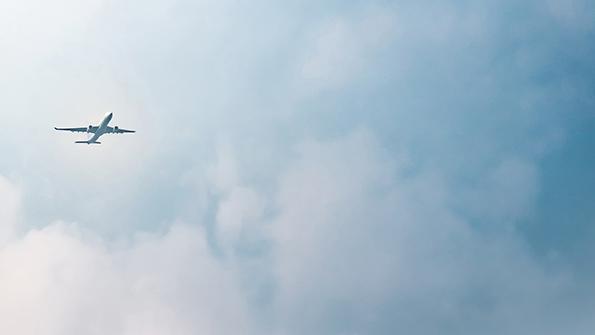
Few of us will miss 2020. The COVID-19 pandemic decimated aviation, tens of thousands of industry workers lost their jobs, and some even lost their lives. But as this annus horribilis draws to a close, it’s a fitting time to be contrarian and note a few of the bright spots amid the carnage.
Efforts to make aviation more sustainable looked almost certain to be set back as the industry went into lockdown and aerospace companies made deep cuts to their R&D budgets. But the opposite happened: As a condition for bailouts, governments demanded more research on cleaner airplanes. Of particular note is an audacious European initiative led by Airbus to develop a hydrogen-powered, carbon-neutral aircraft by 2035. Meanwhile, research into hybrid-electric propulsion and cutting-edge aerodynamics continues to advance. It’s not clear which technologies will break out and what the airplanes of the 2040s will look like, but 2020 might turn out to be the year the spark occurred.
Robust military spending by the Trump administration and upticks in Western Europe provided a cushion for many when the bottom fell out of commercial aviation and maintenance, repair and overhaul (MRO). The defense, intelligence and homeland security markets are also attracting more nontraditional commercial suppliers, broadening competition and innovation. Aviation Week’s forecasters do see defense budgets coming under pressure in future years as governments deal with mountains of debt taken on for COVID-19 relief, but spending should remain stable until a recovery in the commercial sector is well underway.
SpaceX’s launch of astronauts to the International Space Station was one highlight of the year, advancing the commercialization of the space market. Meanwhile, traditional government contractors are upping their game to stay relevant. Northrop Grumman, for example, docked its first Mission Extension Vehicle to lengthen the life of a communication satellite whose fuel was nearly depleted.
Business aviation’s strength in 2020—it fared better than commercial aviation—was a welcome contrast to its performance in the downturn of 2008-09. The upper end of the market will continue to suffer until international travel reopens, but Aviation Week analysts say flight activity for smaller-cabin aircraft has already rebounded to pre-COVID-19 levels.
Aerospace suppliers and MRO providers are facing a painful 2021. But aircraft engine MRO already was in disarray heading into 2020. The downturn has given manufacturers, suppliers and engine shops the ability to catch up on fixes and tech insertions for new engines that were experiencing teething problems. That’s good news for airlines. The same paradigm applies to the wider aerospace supply chain, which was so taxed by production ramp-ups that it was in danger of breaking.
Concerns about workforce shortages—pilots, engineers, maintenance technicians—have temporarily abated. Some technical workers who lost jobs in the commercial world have found new homes with government contractors.
The end of Boeing’s 737 MAX nightmare seems to be at hand now that the FAA has cleared the aircraft to return to service after a 20-month grounding. Future aircraft certifications will be more rigorous and subject to greater international scrutiny, helping strengthen public confidence in aviation safety.
The shutdown of events and travel forced us across the Aviation Week Network to find new ways to connect our industry and provide answers amid all the chaos and uncertainty. Our 119 webinars were viewed live by more than 75,000 people who were given the opportunity to interact with our editors, analysts and industry leaders. We also hosted numerous virtual events that drew a staggering 378,000 attendees. And our editors spoke this year with dozens of CEOs and top government officials, conveying vital business intelligence across an array of platforms—online, print, webinars, videos and podcasts.
Given the challenge of vaccinating billions of people, the industry’s recovery probably won’t begin until mid-2021 and will be arduous. But remember that World War I and the Spanish flu were followed by the Roaring Twenties and an era of great innovation in aviation. One hundred years later, I remain bullish on our industry’s potential.
I hope to see you—in person—in 2021.
